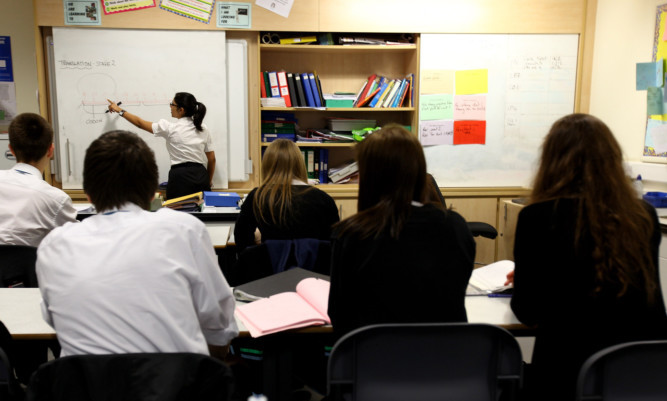Controversial plans to ditch form periods in Angus secondaries have split councillors down the middle.
Moves are under way to change the school timetable from 35 periods a week to 33 from August 2017.
The 30-minute form classes, which were introduced in Angus only three years ago, are set to make way for increased teaching time after a motion to consult schools on the status quo was defeated.
Angus councillors met at Forfar’s Town and County Hall and voted to progress movement on the 33-period week, against an amendment by Councillor David May who had referred the report to full council.
Councillor Sheena Welsh said that discussion with pupils found they “don’t find form time helpful”.
She added: “I admit that I’m disappointed this has been the outcome for this initiative, because I personally thought it held a lot of promise.
“It’s important that we go ahead now as there is an awful lot of work to be undertaken in consulting with our stakeholders, and that includes our pupils.”
Mrs Welsh proposed an agreement in principle that “there could be a change to the secondary school week from the current 35-period structure”.
She proposed that the preferred model would be subject to consultation and the change could take place after an “appropriate transition and preparation phase”.
Mrs Welsh was seconded by Councillor Lynne Devine, who said: “Pupils have been listened to in all the schools and the overwhelming feeling is it is not up to the mark today.”
Submitting that the report recommendation was “flawed”, Councillor David May made an amendment that there should be no change to the structure until a full consultation and costing exercise was done on two options no change, or the 33-period week.
He said: “(The report) was really only proposing a consultation on the 33-period week.
“In my view this is not real consultation.
“Furthermore I do not believe we as a council should insist there should be a one size fits all approach to our schools.
“I’m opposed to this top-down approach that we thinks we know best.”
Councillors also heard deputations for and against the abolition of form times.
Dr Alistair Crozier, chairman of Carnoustie High School’s parent-teacher council, was in favour, while Geoff Robson of Webster’s High School parent council and head girl Laura Cuthill were against making any change.
Mr Robson said: “I don’t believe that this paper produces a great deal of evidence.”
“It does mention that a number of authorities have gone for a 33-period week because of cost savings.
“The best we can say is that moving to a 33-period week did not inhibit them making improvements in attainment.”
Councillors voted 14-13 in favour of Mrs Welsh’s motion.
